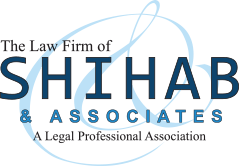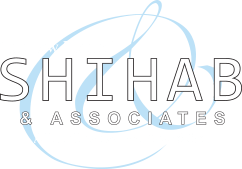 As the H-1B cap season for FY 2017 approaches, employers and potential employees alike must be prepared. For the uninitiated, the H-1B cap refers to the statutory limit placed on visa’s available for temporary workers in specialty occupations. Currently, this limit is set at 65,000, with an additional 20,000 reserved for those with advanced U.S. degrees (also known as the Master’s cap). As more and more employers seek to benefit from highly skilled workers available internationally, particularly in the IT industry, the H-1B visa becomes more highly sought after. Additionally, the ability to extend the H-1B status past the standard six years with the approval of an employment-based immigrant petition adds exceptional benefit to both petitioner and beneficiary.
As the H-1B cap season for FY 2017 approaches, employers and potential employees alike must be prepared. For the uninitiated, the H-1B cap refers to the statutory limit placed on visa’s available for temporary workers in specialty occupations. Currently, this limit is set at 65,000, with an additional 20,000 reserved for those with advanced U.S. degrees (also known as the Master’s cap). As more and more employers seek to benefit from highly skilled workers available internationally, particularly in the IT industry, the H-1B visa becomes more highly sought after. Additionally, the ability to extend the H-1B status past the standard six years with the approval of an employment-based immigrant petition adds exceptional benefit to both petitioner and beneficiary.
USCIS begins accepting cap-subject H-1B petitions on April 1. In the past three years, the Service has received enough petitions to fill the numerical cap within 5 days. Thankfully, due to this massive influx of potential visa beneficiaries, a lottery system has been implemented. So long as USCIS receives the cap-subject petition within the allotted filing period, it will be placed in a random lottery for selection. Those petitions eligible for adjudication under the 20,000 Master’s cap will be selected first. Those that qualify for the Master’s cap but were not selected are then placed with all other petitions for possible selection in the 65,000 general cap. With over 233,000 petitions received by USCIS for the H-1B cap last year, there is only about a 1 in 4 chance of any petition being accepted for filing. All petitions that are not selected in this process are rejected and all documents and filing fees returned. While those not selected may have alternative visas available to them, many will have to wait and resubmit a new petition the following year in the hopes of being selected in the lottery.
Why has there been such a push for these visas? In addition to the need to fill positions in areas which there are not enough qualified U.S. workers, the recent scrutiny and subsequent denial rates in the L-1 visa have forced many employers to take the H-1B route. Additionally, with the ability to extend nonimmigrant status continuously while an immigrant visa is unavailable, many employees that seek to begin the permanent residence process (also known as a Green Card) will attempt to switch to H-1B status. With the recent change to allow H-4 visa holders (dependents of H-1B’s) to gain work authorization, the number of H-1B cap petitions for those already in an employment-based status may cause an additional increase in petitions this cap season.
Will this year be the same? While filings are clearly trending upward, there is potential this year for a minor drop-off. Is the need for H-1B visa holders going down? No, but the cost has gone up dramatically for medium to large businesses to file an H-1B visa this year. Previously, Public Law 111-230 required an additional $2,000 in filing fees for companies that employed 50 or more employees, with over 50% in an H or L nonimmigrant status (known as a “50/50” company). This additional fee applied only to “New” employment. This year, the provision sunset (expired), and the hope was that this hurdle to business would remain off the books. However, the Omnibus appropriations bill that kept the Government from shutting down included a revised version of this fee. The new fee has been doubled to $4,000 for 50/50 companies. Further, while USCIS has provided guidance that the fee only applies in cases of new employment or change of employer (akin to PL 111-230), the language of the law seems to provide a basis for requiring these fees for extensions with the same employer.
There are many reasons for companies to seek international talent through the H-1B visa. First, the types of positions these employees hold are often difficult to fill with qualified U.S. workers. This is one of the reasons recent administrations have pushed to increase U.S. education in Science, Technology, Engineering and Mathematics (known as “STEM”). While the United States workforce is getting up to speed in these areas, U.S. based companies still require professional services in order to thrive. Hence the use of the H-1B visa in these instances. Next, these international employees often provide their organization with a different world-view and way of thinking, driving innovation. Alternative approaches to common problems expose all employees to new ideas, creating a better business environment. Finally, as we are barraged with soundbites from Presidential candidates this election cycle, remember that America was founded by immigrants, and should maintain the same welcoming spirit, particularly in light of the educated professionals the H-1B visa program brings to the U.S.
Though still a few months away, employers should prepare themselves (and potential employee/candidates) for the requirements associated with the H-1B visa petition, in order to provide legal counsel with all necessary information in a timely manner. Our firm has assisted in preparing thousands of these petitions, and would be happy to lend our expertise to your business, whether seeking one or one hundred specialty occupation workers.
If you have questions about immigration and/or you need help in an immigration process, please contact The Law Firm of Shihab & Associates, Co., LPA for a consultation. Our law firm handles various matters including Green Cards and Permanent Residence, family immigration, asylum cases, immigrant visas, non-immigrant visas, employment visas and H-1B visas, investors-visa, PERM applications and many more.

